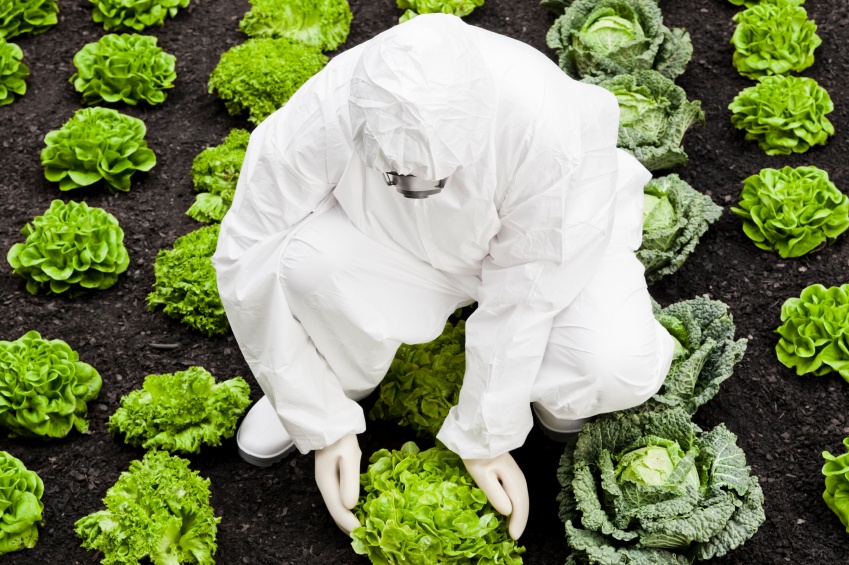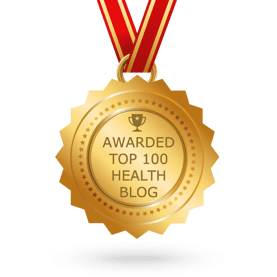I have a friend who has instructions from one of her several physicians to slather herself with SPF 45 sunblock. Every day. All over.
Apparently physical blocking like hats, shirts, long sleeves, etc. is insufficient, because of her autoimmune disease diagnosis. Her physician also said that she should plan to get all of her vitamin D from a bottle for the foreseeable future, since she needs to stay completely out of the sun.
She asked: how do I pick a sunscreen product I feel safe using every day, all over?
Good question.
Integrative Health Blog
Dawn Cannon MD, MS
Recent Posts
Tags: holistic health
How the Environment Can Impact Your Health: Part 2 - What’s in My Take Out?
Posted by Dawn Cannon MD, MS on Wed, Nov 10, 2021
While the Coronavirus pandemic has certainly taken its toll on in-restaurant dining, many of us have continued to feel comfortable ordering take out. But leaving aside for a moment the impact on the economy, there are likely health reasons to consider preparing your own food at home (food here is defined as anything your great-grandmother would have recognized as food).
The fact is that fast food samples have been found to contain chemical toxins, several of which have been linked to cancer, endocrine conditions, difficulty losing weight and testicular abnormalities. Chemical contamination of food may disproportionately impact marginalized groups, given the higher densities of fast food restaurants in neighborhoods predominantly populated by marginalized peoples.
Read MoreTags: environmental medicine
Menopause and Perimenopause: An Integrative and Preventive Medicine Approach
Posted by Dawn Cannon MD, MS on Thu, Jun 06, 2019
Menopause is defined as the permanent cessation of periods resulting from the loss of ovarian follicular activity. Menopause is 12 consecutive months with no period, and this is only known with certainty in retrospect. Perimenopause is the two to eight years preceding menopause and one year following the final menses.
Interestingly, we women begin life with all the follicles we will ever have! Throughout our lives, through ovulation and apoptosis (the dying off of cells), we lose follicles. Women experience menopause when the follicles in their ovaries are exhausted. Think of it as the cycle of the ovaries- first they are asleep, then at birth they wake up, and once they have served their purpose, they go back to sleep again.
In industrialized nations, menopause usually occurs between ages 48-52, with the mean age in the U.S. at 51 years. Menopause occurring in a woman under the age of 40 is considered premature menopause. Factors that can affect when a woman goes into menopause are genetic factors, environment, lifestyle, and systemic diseases, and an integrative and preventive medicine approach takes these factors into consideration. Genetics plays a key role as a woman’s age at menopause is associated with her mother’s menopausal age.
Symptoms and Concerns of Perimenopause and Menopause
Read MoreTags: menopause, hormones, womens health
Well, we sort of knew that, given the genetically modified corn, soybeans, cotton, canola, sugar beets, and the list goes on1. In this case, however, I am referring to an NPR story2 on the new dietary habits of animals at the Melbourne Zoo.
“ . . .the monkeys are no longer allowed to eat bananas. And the pandas are getting pellets instead of plums. In fact, fruit has been phased out completely. That's because the fruit that humans have selectively bred over the years has become so full of sugar, the zoo's fruitarian animals were becoming obese and losing teeth.”
How ironic that, in this case, humans are the “canary in the coal mine”3.
The author being interviewed goes on to describe the fruit we see in stores today as something not found in nature, that is, beautiful to the eye and sweet in taste, but “robbed” of nutritional value.
Read MoreTags: holistic nutrition, toxins
What's In Your Sunblock? Tips for Healthy Sun Protection
Posted by Dawn Cannon MD, MS on Mon, Jun 25, 2018
Last Updated: July 14, 2021
Some time ago, I blogged about my friend who was instructed by her primary care doctor to use sunscreen daily, all over. At that time, the doctor suggested SPF 45, but he has since retracted that recommendation and now suggests using SPF 100. I have recently delved a little deeper into this issue for several reasons.
In my previous blog, I alluded to the fact that finding a sufficiently protective sunscreen isn’t always so easy for everyone. Active and inactive ingredients can pose problems for some (more on this below). Looking for SPF 100 products can narrow the field even further. Secondly, if physical sun screen creams and lotions leave you looking like an extra from The Walking Dead, you are unlikely to continue applying enough sunscreen.
On the other hand, according to my friend’s doctor, physical screening like hats, shirts, long sleeves, etc. is insufficient because of her autoimmune disease diagnosis. Her physician also suggested that she plan to get all of her vitamin D from a bottle for the foreseeable future since she needs to stay completely out of the sun. Lastly, sun screening technology continues to advance in ways that users should be aware of - and here I mean protective clothing, accessories and supplements. There is a lot online about choosing an appropriate SPF, so I won’t address that in this blog.
She asked: how do I pick a sunscreen product I feel safe using every day, all over?
Good question.
As a holistic physician, I get questions all the time about what may be a healthier alternatives for food, water, cleaning products, skin care products, etc. Enter Environmental Working Group, or EWG.org. The Environmental Working Group is an environmental organization that provides education and research on toxic chemicals, agriculture and public land. They offer Consumer Guides to skin care, pesticides in fruits and vegetables, home cleaning products and more with safety and hazard ratings for ingredients in each category.
Read MoreTags: holistic health, toxins
Which Room in Your Home Has the Biggest Cancer-Fighting Potential?
Posted by Dawn Cannon MD, MS on Mon, Feb 13, 2017
Is it your bedroom, where you can get restful sleep regularly?
Maybe. The International Agency for Research on Cancer had classified shift-work “that involves circadian disruption" (disruption of the 24 hour biological clock) as probably cancer causing to humans (Straif, 2007), but a large study published in 2016 did not find a statistically significant relationship between shift work and cancer (Travis, 2016). So avoid shift work if you can, perhaps the jury is still out on this one.
Is it your garden?
Although not a room in your home, you can garden organically and avoid pesticide exposure, or use lawn maintenance services that avoid chemical pesticides. Why? Certain pesticides are known to increase breast cancer (triazine pesticides), lung cancer (carbamate and phenoxyherbicides) and brain and blood cancers in children (indoor insecticides) (Sanborn, 2004).
Is it your bathroom, where you use multiple personal products made with dozens of chemicals, every day?
Read MoreTags: cancer, cancer prevention
Understanding the Human Microbiome: Mini Ecosystems in the Body
Posted by Dawn Cannon MD, MS on Tue, Oct 18, 2016
So many –“omes” to understand . . . human genomics, metabolomics, toxigenomics . . . what does the suffix “–omics” actually mean?
One free online dictionary1 says that –omics is “the large scale study of biological entities”. So genomics, in the most simplistic terms, is the study of all of the genes of an organism; metabolomics is the study of the small molecules that are substrates (biochemical ingredients), products, or intermediates of metabolic reactions in an organism.
What is the microbiome in the body?
The microbiome refers to the full set of micro-organisms that inhabit a given site, most often (when discussing humans) the gut, but one might study the skin, oral, nasal/ lung or vaginal microbiomes. Each area has its own cluster of bacteria, or microbiota. Gut microbes make up the largest population within the human microbiome. When studying the microbiome, often the genetics of the microorganisms that live on us and in us, are the focus.
Read MoreTags: digestive health, microbiome
What does opioid-induced constipation (OIC) have to do with the Super Bowl?
Not much, I would have imagined, but thinking broadly, after the 112 million people who tuned in1 finished laughing, maybe a few hundred thousand viewers might connect the dots.That’s because, in 2014, an estimated two million people in the United States suffered from substance use disorders related to prescription opioid pain medicines2. And nearly half of those on long-term opioids experience OIC3.
At a recent continuing medical education event, I was surprised to find an entire 90 minute session (plus a non-credit mini-session provided by a pharmaceutical company) devoted to opioid-induced constipation.
Apparently, as a nation, we are such avid users of prescription drugs like oxycodone, hydrocodone and codeine, that we must now be concerned about people blowing out their colons because of severe OIC3. This goes far beyond stool softeners and every-so-often laxative use. Bowel perforation is certainly no laughing matter.
But the topic made me think of the common complaint of garden-variety constipation, and so I polled my colleagues at NIHA for their favorite approaches to constipation.
Read MoreTags: holistic health, constipation
How the Environment Can Impact Your Health: What’s in Your Water?
Posted by Dawn Cannon MD, MS on Tue, Feb 09, 2016
Edited: November 11, 2021
It depends.
If you use tap water, you can find out relatively easily by perusing the website of your local water utility. Local water utility websites (District of Columbia Water and Sewer Authority, and Washington Suburban Sanitation Commission, for example) and EPA.gov contain a wealth of information on regulated contaminants, like lead and coli-form bacteria (like E. Coli), and on currently unregulated (but periodically tested for) contaminants, like chromium 6 (entered into popular culture by the movie Erin Brockovich) and strontium.
If you use well water, testing every few years by a laboratory certified to do so should disclose the contents of the water, the results of which are subject to activity or industry near your property, above or underground.
What does this have to do with your health?
Read MoreTags: water, detoxification, toxins
How to Obliterate the Effects of the Top Holiday Indulgences
Posted by Dawn Cannon MD, MS on Tue, Jan 05, 2016
Although we may eat and drink our way through the days between Thanksgiving and New Year’s Day, almost to a person, we wake up on January 1st with every intention of doing things differently for throughout the coming year.
But what about just trying to clear the cobwebs, wash out the alcohol, get past the effects of all the salted and carmelized nuts, cheese plates, cookies and eggnog, and get moving after more than a few missed work-outs? You know, a jump-start to get to the lifestyle changes you plan to make for the year.
Here is a plan to obliterate the lingering effects of the Top Five Holiday Indulgences.
Read More
Tags: holistic health
.png?width=305&height=132&name=NIHAlogoBLUE_3_transparent%20(2).png)










